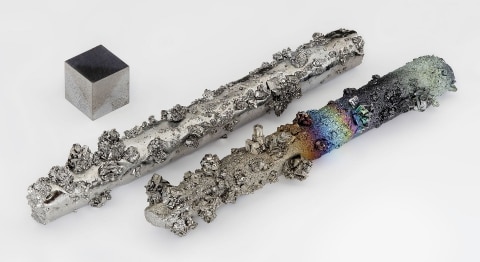Tungsten-rhenium alloy is an alloy strengthened by a solid solution composed of a tungsten element as a matrix and a rhenium element. The rhenium contents commonly used in alloys are 3, 5, 10, 25 and 26. It is divided into low-grade W-Re alloy (Re≤5%) and high-grade W-Re alloy (Re≥15%).
Tungsten-rhenium alloy has better mechanical properties and ductility than pure tungsten, and has a high resistivity, making it more processable and weldable.
The tungsten-rhenium alloy possesses a series of excellent properties, such as a high melting point, high resistance, high hardness, high plasticity, high recrystallisation temperature, high resistivity, high thermoelectric potential value, low vapour pressure, low electron work function and a low ductility and brittleness transition temperature. Tungsten-rhenium comes in wire, rod, plate, and sheet forms. Wire materials account for the vast majority and are mainly used as high-temperature structural materials.
Tungsten-rhenium alloy is a composite of two transition metals: tungsten (W) and rhenium (Re). This combination creates a material with unique properties, used in demanding environments. A typical chemical composition for this alloy is:
• Tungsten (W): Approximately 95% to 99% by weight
• Rhenium (Re): Approximately 1% to 5% by weight
Main characteristics of W-Re alloy :Heat resistance : Alloy W-Re offers exceptional resistance to high temperatures, making it suitable for applications subject to extreme thermal conditions, such as gas turbine components and heat shields in the aerospace industry.
• Corrosion resistance : Thanks to the presence of rhenium, known for its resistance to corrosion, W-Re alloy provides increased protection against corrosive environments, extending service life and reliability.
• Mechanical strenght : The tungsten-rhenium alloy combines the high mechanical strength of tungsten with the ductility and creep resistance of rhenium, making it suitable for applications requiring high toughness.
Applications for alloy W-Re :• Aerospace industry Components for rocket engines, rocket nozzles, structural parts.
• Semiconductor industry : Components for substrate supports, electrical contacts.
• Chemical industry Chemical reactor equipment, corrosion-resistant parts.




